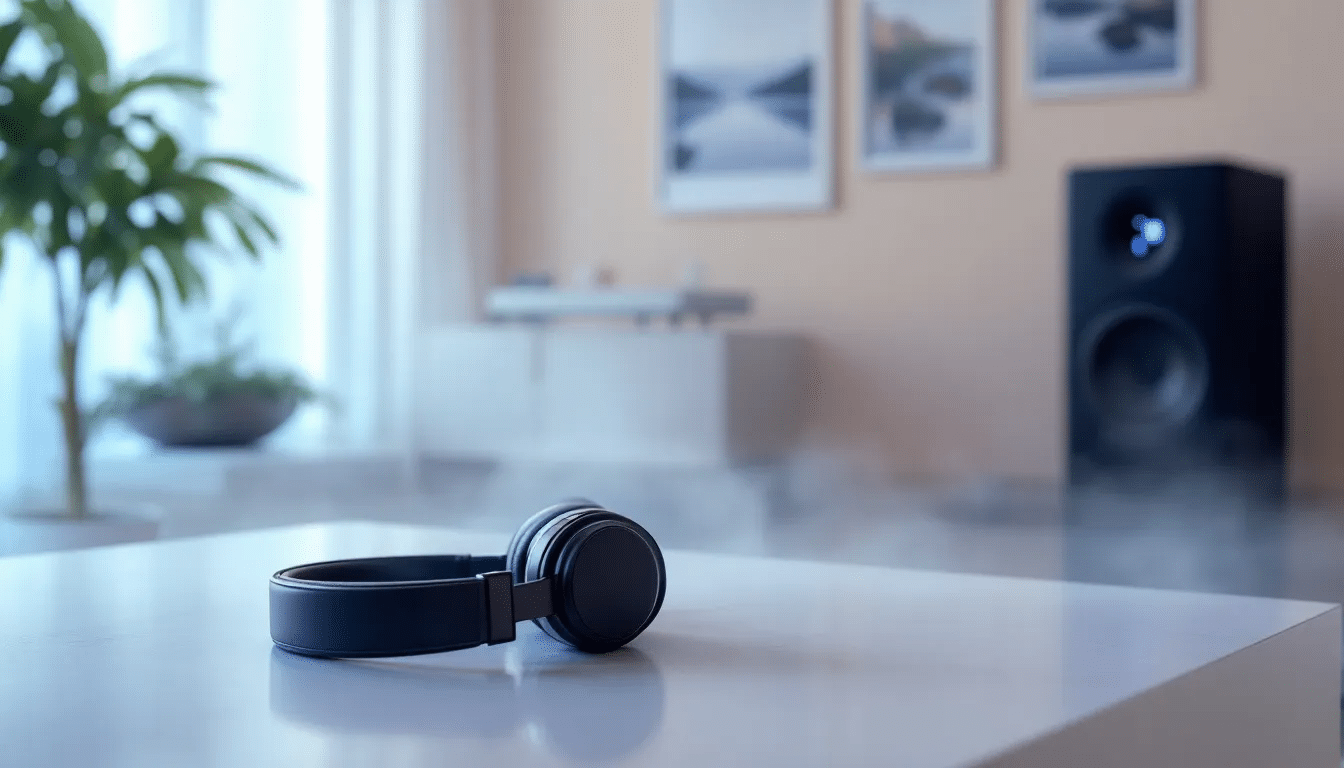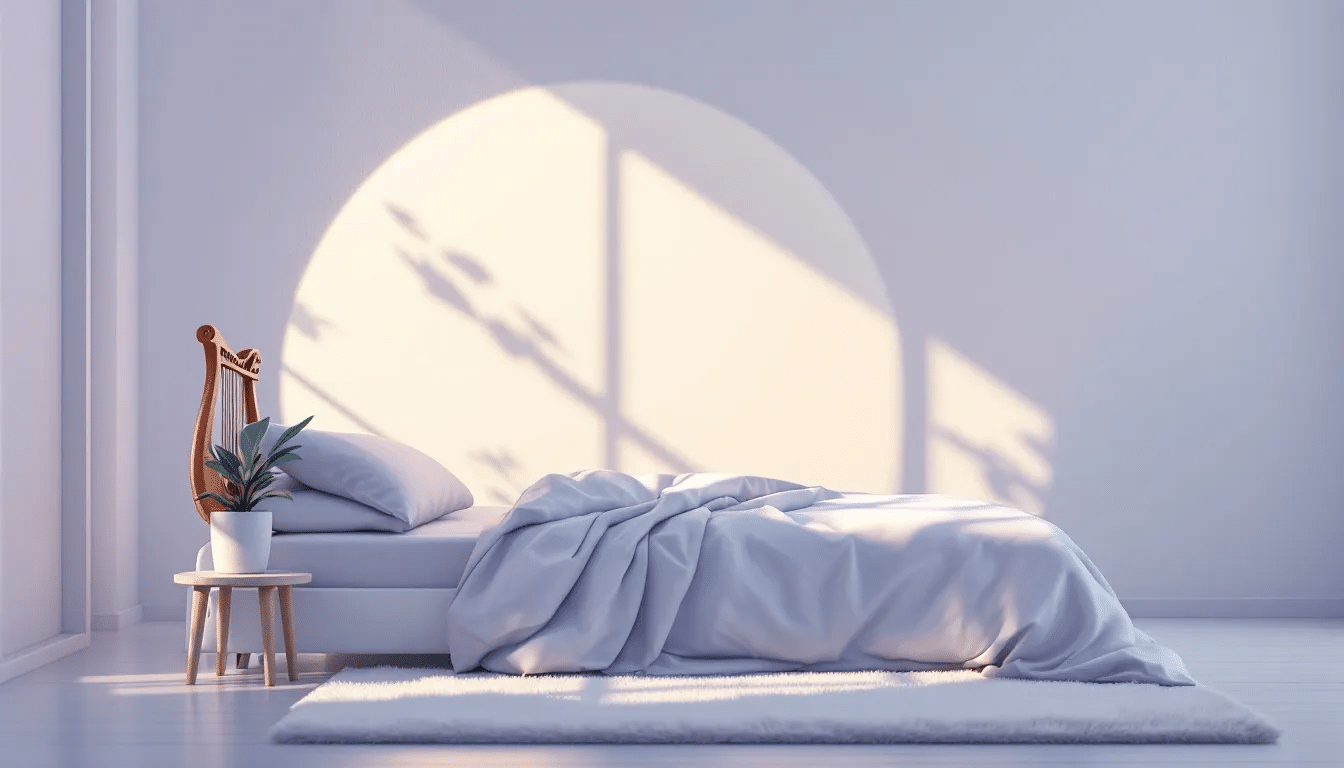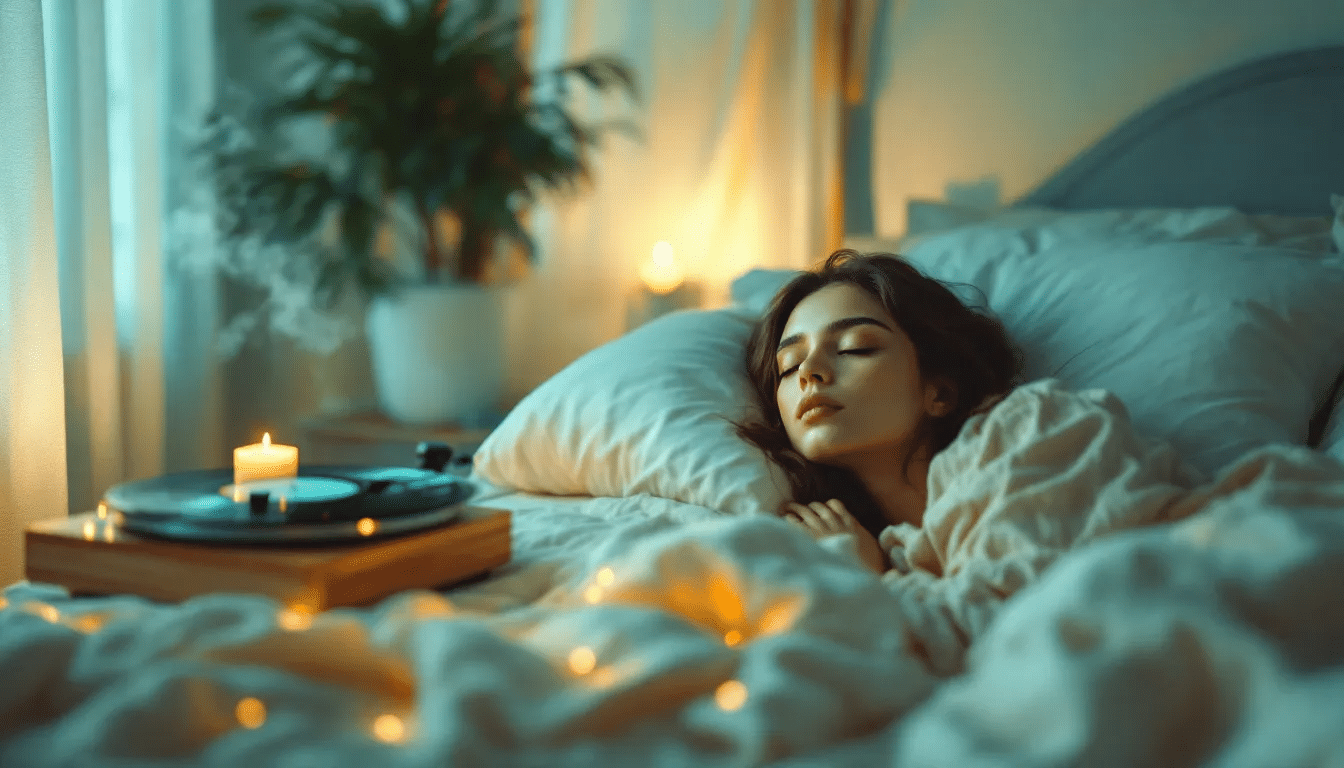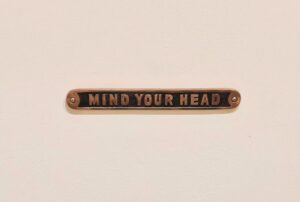Looking to improve your sleep? Music for sleeping adults can help by reducing stress and promoting relaxation. This article explores the best types of sleep music and how they can help you achieve better sleep.
The Science Behind Sleep Music

Listening to sleep music has been shown to substantially lower stress and foster a sense of calm, both vital for enhancing the quality of our sleep. This improvement is partly due to the ability of soothing tunes to decrease cortisol levels, a hormone linked with stress that can disrupt sleep. Elevated cortisol keeps us on high alert, which hinders relaxation and makes it challenging to drift off. By reducing these levels through relaxing melodies, we set the stage for a more peaceful night’s rest.
Engaging in music at bedtime triggers the release of dopamine—a neurotransmitter connected with feelings of pleasure—thereby creating an atmosphere conducive to positive emotions as one prepares for sleep. Such emotional uplift can help alleviate pain and anxiety that often act as obstacles in achieving restful sleep. Calming tracks are known to ease down our autonomic nervous system resulting in slower heartbeats, decreased blood pressure. Thus deepening relaxation – all key ingredients necessary before easing into slumber.
The tempo or speed of musical beats also holds significant importance where slow-paced rhythms between 60-80 beats per minute mirror our body’s own pre-sleep patterns assisting in falling asleep more readily. Similarly intriguing are binaural beats—that produce an auditory effect potentially impacting brainwave frequencies—to promote tranquility leading up to improved nighttime repose.
Studies suggest that incorporating listening sessions prior to settling down at night may contribute towards bettering one’s overall sleep efficiency ensuring deeper recovery phases while sleeping—as evidenced by specifically tailored ambient compositions like Marconi Union’s ‘Weightless’ intended precisely for minimizing angst hence fortifying serenity ideal before hitting the pillow.
New age genres too frequently blend natural soundscapes such as rainfall or waves adding yet another layer of support within unwinding activities.
Accentuating the importance of emphasis. How influential melody can be on nocturnal habits including wellness benefits surfaces from research findings highlighted within studies dedicated to exploring this area.
Benefits of Listening to Sleep Music

Before: Engaging in the practice of listening to sleep music brings an array of advantages, chiefly aiding in stress reduction and advancing the relaxation needed for initiating sleep. Soothing tunes have the power to decrease cortisol levels within our systems, which serves to diminish stress while cultivating a serene setting suitable for slumber. By minimizing these hormones associated with tension, music creates a peaceful milieu that is advantageous for achieving quality rest.
After: The act of indulging in sleep melodies comes with multiple benefits including:
- Diminishing stress
- Encouraging relaxation required to commence sleeping
- Decreasing bodily cortisol levels which aids in mitigating anxiety
- Creating conditions conducive for tranquil rest environments
- Establishing settings ideal for attaining high-quality nocturnal repose
A Notable merit of employing musical rhythms as part of bedtime routines lies in their capacity to heighten overall sleep efficacy. This pertains to maximizing actual time spent asleep during periods one is bed-bound. Melodies may act as insulators against intrusive sounds thus supporting continuous and stable snooze cycles – something especially useful if you find yourself amidst clamorous surroundings or beside partners prone tobnoxious nighttime noise-making habits like snoring. Scholarly examinations suggest therapies utilizing rhythm can intensify dormancy standards via influences on neurotransmitters linked with tranquility.
In parallel, utilizations rooted around therapeutic applications involving harmony present themselves as effective measures countering insomnia symptoms without introducing side effects often encountered when resorting to pharmaceutical solutions. Insomnia itself affects about 12%-20% population-wise – thus positioning such melodious interventions onto favorable ground within remedial frameworks professionally endorsed by clinicians everywhere where subjects report emerging from rhythmic sessions feeling renewed, thus implying considerable positive impacts upon personal welfare dynamics subsequent morning after.
Harmonics specific frequencies like those at 396Hz are conjectured champions at combating distress alongside anxiousness thereby enabling profound states consisting both physical ease coupled emotional equilibrium allowing individuals undergoing treatment opportunities towards exorcising adverse sensations paving way toward engaging recuperative unconscious episodes effectively bettering possibilities regarding sustained nightly rests they seek help through non-pharmacological means administering superior caliber shut-eye times.
Types of Sleep Music for Adults
Individuals aiming to improve their sleep quality can explore a range of sleep music styles, each providing distinctive advantages. Notably, the classical pieces by maestros such as Chopin and Debussy may echo the natural rhythms of sleep, thus assisting in bringing about sleep. Music that emphasizes instruments alone, with soothing piano or gentle strumming on an acoustic guitar, tends to be tranquil and conducive for easing into rest at bedtime.
For those seeking slowed-down beats coupled with mellow tunes to ease into relaxation suitable for sleeping purposes, chill-out music is an ideal choice. Ambient sound collections are effective in calming the mind and fostering an improved atmosphere for restfulness. Given the variety of available sleep-inducing music types, it is likely that most individuals will discover a genre that aligns well with their preferences—facilitating relaxation and contributing to swifter transitions into asleep state.
How Calming Music Improves Sleep Hygiene
Incorporating calming tunes into a bedtime routine significantly aids in advancing one’s sleep hygiene, shortening the time required to drift off and boosting the overall quality of rest. Tuning in to slow-paced melodies, with rhythms ranging from 60 to 80 beats per minute, can sync up with your resting heart rate and facilitate an easier shift into profound slumber. This harmony establishes a setting that is optimal for sleeping, thus enabling individuals to nod off quicker and maintain their sleep for extended periods.
Music serves as an effective tool for diminishing levels of anxiety, which proves valuable for those contending with stress-induced sleeping challenges. By lowering both heart rate and blood pressure while relaxing muscles tension. Soothing sounds craft a tranquil environment that fosters relaxation, alleviates stress—contributing positively towards falling asleep more effortlessly. Utilizing soft harmonies also offers an efficient way of masking any intrusive ambient noises thereby cultivating a quieter ambiance conducive to restful nights.
Integrating gentle musical pieces into evening routines helps ingrain consistent circadian rhythms by signaling it’s time for winding down—a step integral not just to improving one’s regimen concerning sleep but also establishing stable patterns leading to improved durations and effectiveness of nightly repose.
Deep Sleep Music: Achieving Complete Relaxation

Music specifically crafted for deep sleep is crucial in fostering relaxation and improving the overall quality of sleep cycles. Sleep music, often instrumental or classical due to its lack of lyrical content, can avoid distracting thoughts that might impede relaxation. Binaural beats involving precise sound frequencies are notable for their ability to assist in reaching a relaxed state and achieving deeper sleep by creating an auditory illusion that alters brainwave activity conducive to rest.
Listening to 396 times. Hz tunes have been shown to guide the mind from alert beta states into more tranquil alpha and theta brainwave territories, facilitating the level of calm required for high-quality slumber. The soothing effects attributed to 396 studies. Hz sounds serve as a tool for individuals seeking serenity within themselves, which leads directly toward enhanced sleeping experiences.
Reflecting on live performances centered around providing relaxing sleep through music, one artist noted how these sessions allowed not only unwinding but also awakening feeling rejuvenated—nurturing profound connections with one’s own warm subconscious realms.
Healing Music for Better Sleep Quality

Therapeutic healing music is widely recognized for its beneficial impact on improving sleep quality. Such music often includes Solfeggio frequencies, particularly 432. Hz, which are believed to produce soothing effects that can facilitate better sleep. The frequency of 528 Hz—referred to as the ‘love frequency’—is noted for fostering healing and deepening meditation experiences. These specific sound frequencies contribute to a serene atmosphere ideal for sleeping while also supporting emotional equilibrium and overall wellness.
Shambhala-related meditation tunes assist individuals in discovering their tranquil core and boosting their emotional health. This type of meditation incorporates a foundational healing drone at 396 feet. Hz known to be effective in establishing a peaceful setting suitable for restful sleep. The meditation experience is enhanced by recording it using 3D Binaural Sound technology, which intensifies the auditory sensation and aids in achieving greater relaxation levels during listening sessions.
Music Therapy for Sleep Disorders
Music therapy is increasingly recognized as a viable treatment for various sleep disorders, including insomnia. Consistent use of music as a sleep aid can enhance therapeutic effects over time, improving overall sleep outcomes. For individuals suffering from pain, music can trigger dopamine release, which may alleviate discomfort and improve sleep quality.
Music can alleviate symptoms of depression and improve sleep for individuals battling mood disorders. Engaging with 396. Hz music may aid in cellular repair and vitality, contributing to overall health and better sleep.
Evidence suggests that music therapy can be an effective component of treatment plans for sleep disorders and sleep problems, enhancing relaxation and well-being.
Real-Life Experiences: How Music Transformed Sleep

Persons grappling with insomnia have experienced a notable enhancement in their capacity to fall asleep due to the tranquil atmosphere generated by sleep music. User accounts indicate that various types of sleep music, spanning from classical melodies to ambient noises, assist uniquely in promoting relaxation and easing into sleep. These individuals often observe an extension and betterment in their sleep quality when they include sleep music as part of their nightly habits, leading them to wake up feeling rejuvenated.
Those who consistently incorporate sleep music into their routines experience heightened overall well-being. Studies conducted by researchers confirm its pivotal influence on facilitating peaceful and rejuvenating sleep for those participating in such research, thereby boosting overall sleep efficiency.
Introducing Shambhala: A Meditation Music Experience
Shambhala represents a mythical domain deeply rooted in serenity and vitality, closely associated with the art of meditation. This legendary kingdom situated within Central Asia is celebrated for its symbiosis of harmony, robust health, and overall prosperity. The music crafted for Shambhalan meditation aims to cultivate an environment conducive to tranquility and healing, aiding individuals in discovering their personal sanctum of peace.
By clicking on the given link, you have the chance to delve into the world of Shambhala meditation music tailored specifically to bolster relaxation and enhance emotional well-being. This experience presents a singular opportunity for you to weave therapeutic melodies into your nightly routine as a means to improve your sleep quality. All the information about the piece of meditation music is available at the following URL: https://orchestralmeditations.com/shambhala-528hz-meditation-professional/
Summary
In conclusion, sleep music offers a powerful tool for enhancing sleep quality and overall well-being. From the science behind its calming effects to the various genres available, sleep music can transform your nights and help you achieve a good night’s sleep. Incorporating calming music into your bedtime routine can improve sleep hygiene, reduce stress, and promote relaxation.
As we have seen, healing music and music therapy offer significant benefits for those struggling with sleep disorders. Real-life experiences and the introduction of Shambhala meditation music further highlight the transformative power of sleep music. Embrace this peaceful journey and experience the profound impact that music can have on your sleep and overall health.
Frequently Asked Questions
What is Shambhala described as in the text?
Shambhala is described as a mythical kingdom in Central Asia that represents harmony, good health, and well-being.
What frequency is used in the 396Hz meditation?
This meditation employs the 396Hz frequency as a foundational healing drone that fosters emotional liberation and provides stability.
Where was the 396Hz meditation recorded?
The 396Hz meditation was recorded at Abbey Road Studios in London.
What type of sound recording is used in the meditation?
The meditation utilizes 3D Binaural Sound recording, which enhances the immersive experience and creates a sense of presence. This technique helps in deepening relaxation and focus.
What discount do friends receive when referred to the meditation music?
Friends receive a 25% discount voucher code for any of the meditation music tracks when referred.



